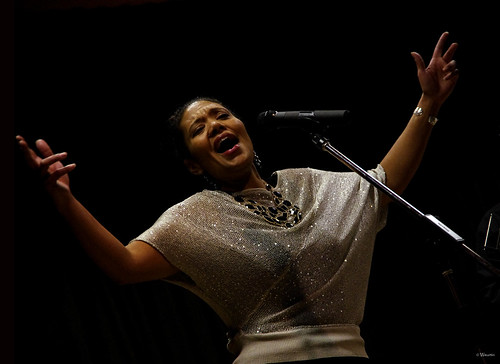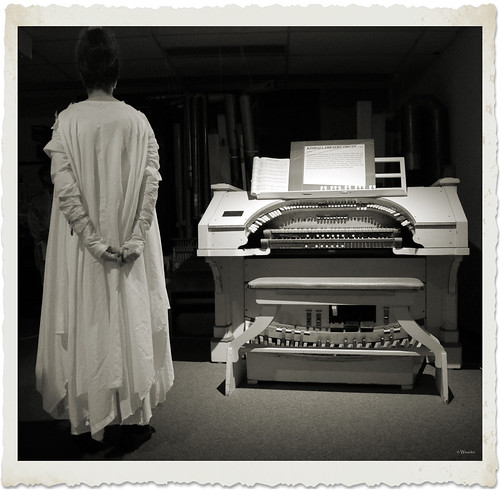This is a super simple lesson on how shutter speed works and how to capture movement in your photos. First, I’ll cover some basic shutter speed terminology, and then get into a couple easy step-by-step experiments you can do on your own. At the end are suggested links to places to shoot action.
For the experiments you will need:
o a
camera that has a shutter speed priority setting (either TV or S). Check your camera manual if you're not sure where the shutter speed setting is on your camera.
o your favorite lens.
o a
constant light source
o a
moving object
[optional: tripod]
[optional: tripod]
Shutter Speed
“Shutter speed” refers to how fast an aperture shutter opens
and closes and is measured in seconds. (See Experiment : Aperture and Depth of Field to learn about aperture.)
A camera’s preset shutter speed can range from as fast as one eight thousandth of a second (1/8000) to as slow as 30 seconds. You can go even slower when you use your camera's B or Bulb setting.
Setting your camera to shutter speed priority allows you to change the shutter speed to whatever you like. The camera will automatically decide the best aperture and ISO.
A camera’s preset shutter speed can range from as fast as one eight thousandth of a second (1/8000) to as slow as 30 seconds. You can go even slower when you use your camera's B or Bulb setting.
Setting your camera to shutter speed priority allows you to change the shutter speed to whatever you like. The camera will automatically decide the best aperture and ISO.
How does shutter speed work?
It’s all
about letting in light. When you set
the shutter speed on your camera, you control how long you let light hit your camera’s sensor (or film).
Getting Creative - Capturing Movement
Besides controlling how fast light hits your sensor, you
can use shutter speed to stop the action in your photos. The speed of the shutter opening and closing decides how much action is stopped.
Fast Action
The faster the shutter speed the more likely you are to "freeze" the action. Shutter speeds higher than 250 are best when you want no blurring in your photos.
Blurred Action
The slower the shutter speed the greater the action blur.
If you wanted to capture action, but you want to show movement you would set your shutter speed to something slow. How slow depends on how much blur you want.
Fast Action
The faster the shutter speed the more likely you are to "freeze" the action. Shutter speeds higher than 250 are best when you want no blurring in your photos.
The slower the shutter speed the greater the action blur.
If you wanted to capture action, but you want to show movement you would set your shutter speed to something slow. How slow depends on how much blur you want.
The slower the shutter speed the more blurred the action. A tripod that allows you to move your camera from side to side is really handy, especially if you choose really slow shutter speeds.
Unless you are made of iron or don't breath, the slow shutter speed will also show camera shake.
Points to Ponder
Angle
Angle
The angle that you shoot from plays a part in
how your action photos turn out.
It's easier to capture objects that are moving
directly towards or straight away from you.
Objects moving from side to side in front of you are a little more
difficult to capture. For objects moving
from side to side, you might want to try panning.
Panning
Panning is when you follow your moving subject with your camera.
To show how it's done, here's a quick One Minute with Willy video by photographer Willy Foo.
Panning
Panning is when you follow your moving subject with your camera.
To show how it's done, here's a quick One Minute with Willy video by photographer Willy Foo.
__________
Experiments
The following experiments will illustrate what happens when
you change shutter speed.
Set up:
- Set your camera to shutter speed priority – TV or S. The camera should automatically select the proper ISO and aperture setting. Your camera settings might blink if the shutter speed you have selected exceeds what the settings the camera thinks it can handle. (Think deer in the headlights.) Unless you make adjustments, your photos might be extremely over or under exposed.
- Find or create a moving object. Examples: a running pet, a jumping friend, a waterfall or water fountain, rolling pool table balls.
- A consistent light source.
Experiment 1
Question: What
happens when you focus on a moving object at various shutter speed setting?
- Set your camera’s shutter speed to as fast (e.g. 1/4000) as your camera will go.
- Shoot your moving subject.
What do you see? What
aperture did your camera choose? How
sharp is the action in your photo?
- Reset your shutter speed to 1/125.
- Shoot your moving subject.
What do you see? What
aperture did your camera choose? Is
there any blurring in your photo?
- Reset your shutter speed to as low as your camera will go.
- Shoot your moving subject.
What do you see? What
aperture did your camera choose? How
much blurring is in your photo?
Experiment 2
Question: What
happens when you focus on a moving object at various shutter speed settings,
shooting from different angles?
- Have your subject move towards or away from you.
- Repeat the steps from Experiment #1.
What do you notice?
Is it easier or harder to focus on your subject?
- Have your subject cross in front of you and try panning.
- Repeat the steps from Experiment #1.
What do you notice?
______________
Suggested places to shoot action:
______________
Suggested places to shoot action:
For more shutter speed information have a look at the Allversity Moments and Motion lecture.





